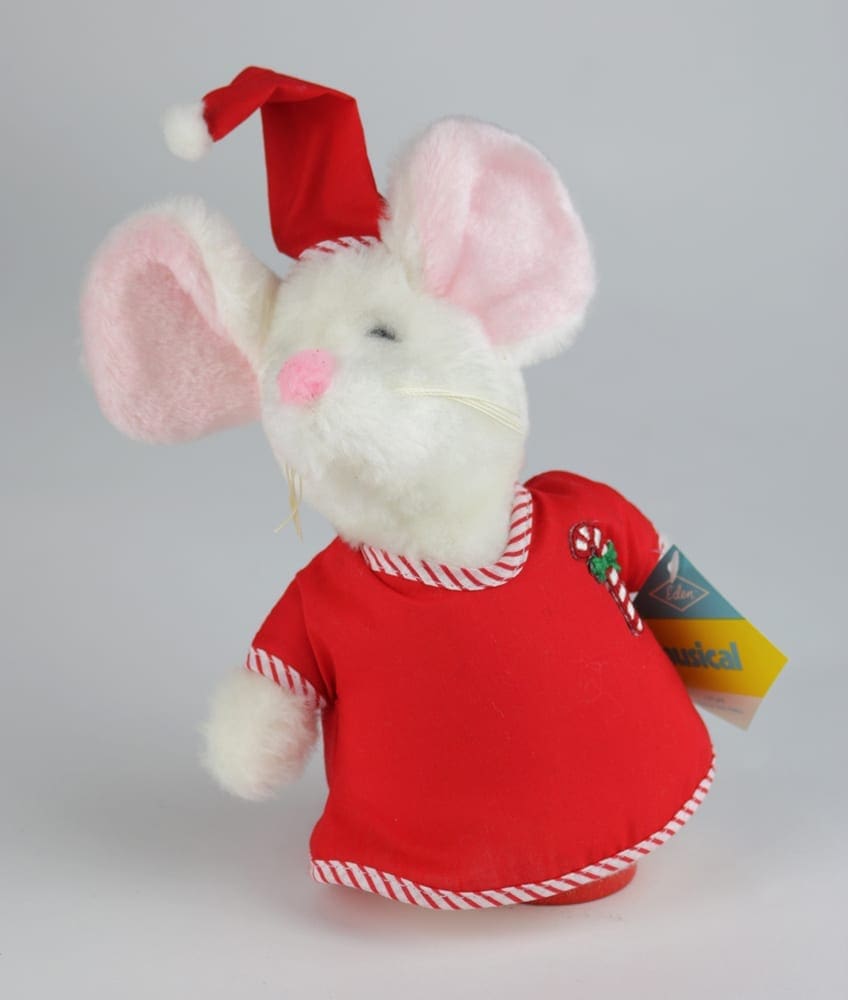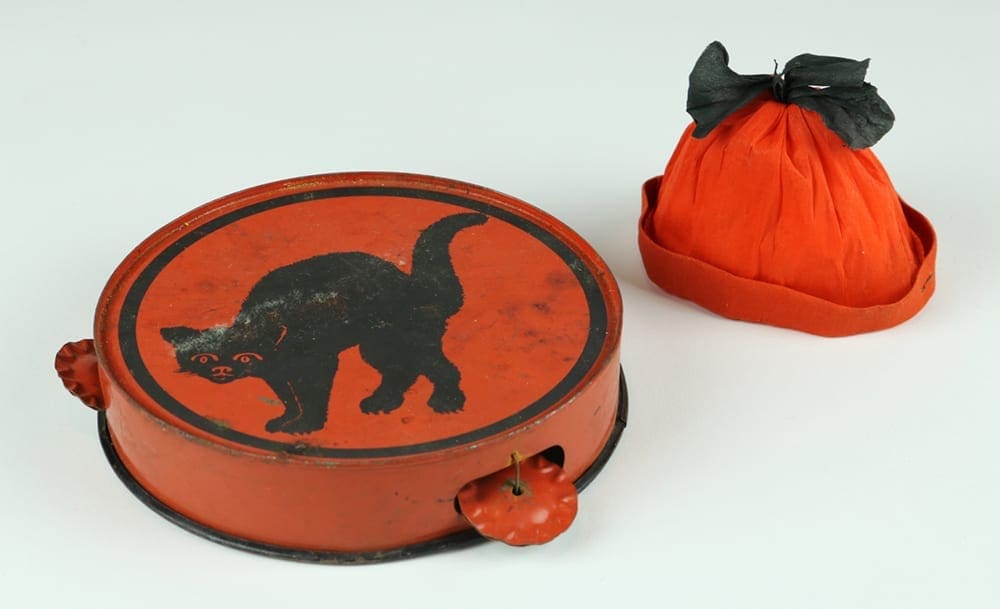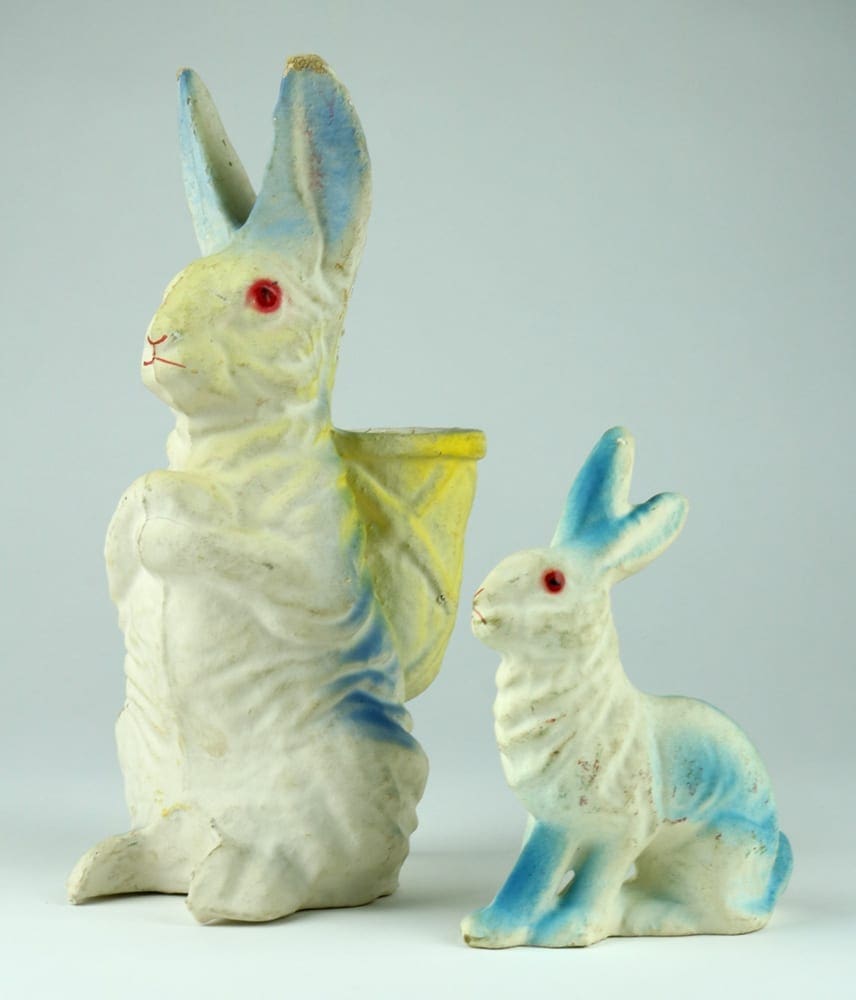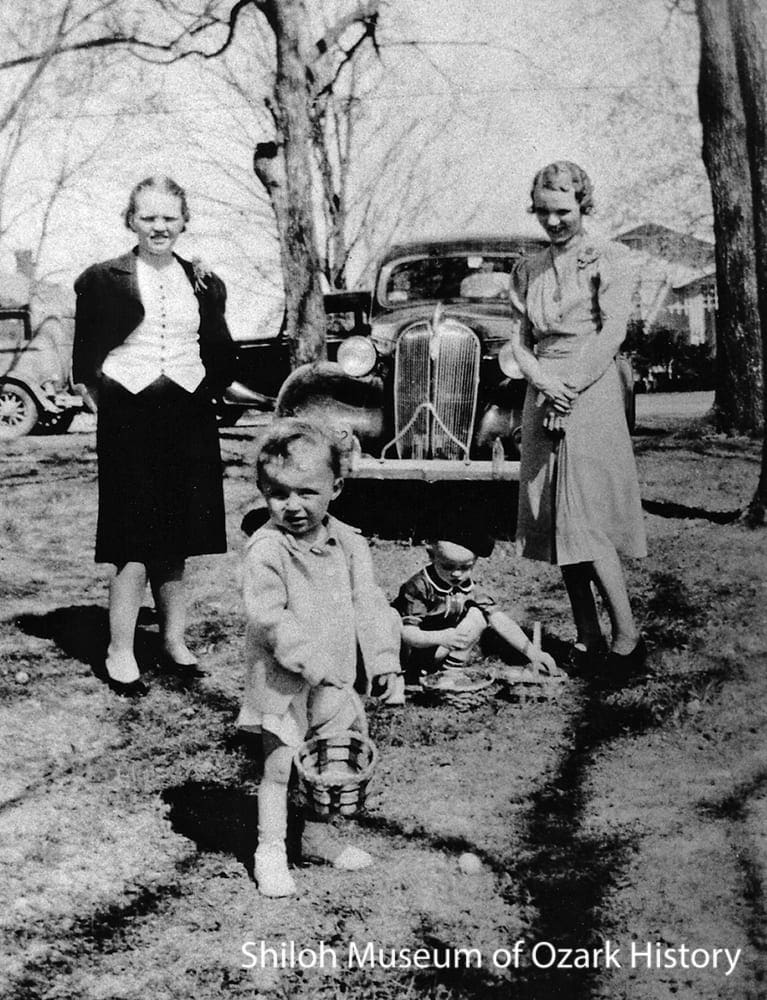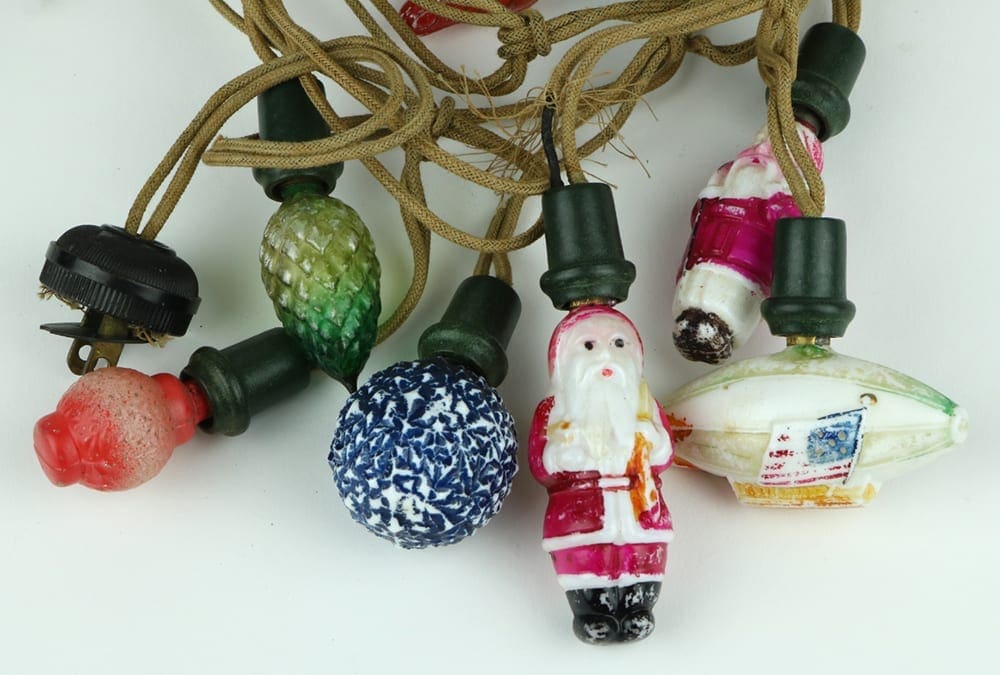Easter Egg
This papier maché egg probably belonged to twins Mary and Ellen Russell of Harrison (Boone County) in the early 1920s. Mary and Ellen were born to Jesse and Rose Grever Russell in 1917. According to the 1920 census, the Russells lived at 614 West Central Avenue in Harrison. Jesse Russell was an editor of the Boone County Headlight newspaper. In 1947 he authored Behind These Ozark Hills, a collection of personal reminiscences about life in Carroll and Boone counties.
Germany has a long history of using papier maché eggs to celebrate Easter. From the late 1800s until the early 1930s, Germany exported empty papier maché eggs to the United States and throughout Europe. The word “GERMANY” stamped inside the egg helps narrow down when it was made. Up until about 1920, papier maché eggs manufactured in Germany were stamped “German” or “Germany.” From 1921 until 1933 they were stamped “German Republic. Following World War II, several stamps were used, including “East Germany,” “German Democratic Republic,” “West Germany,” and “Federal Republic of Germany.”
Donated by Virginia Hicks
This papier maché egg probably belonged to twins Mary and Ellen Russell of Harrison (Boone County) in the early 1920s. Mary and Ellen were born to Jesse and Rose Grever Russell in 1917. According to the 1920 census, the Russells lived at 614 West Central Avenue in Harrison. Jesse Russell was an editor of the Boone County Headlight newspaper. In 1947 he authored Behind These Ozark Hills, a collection of personal reminiscences about life in Carroll and Boone counties.
Germany has a long history of using papier maché eggs to celebrate Easter. From the late 1800s until the early 1930s, Germany exported empty papier maché eggs to the United States and throughout Europe. The word “GERMANY” stamped inside the egg helps narrow down when it was made. Up until about 1920, papier maché eggs manufactured in Germany were stamped “German” or “Germany.” From 1921 until 1933 they were stamped “German Republic. Following World War II, several stamps were used, including “East Germany,” “German Democratic Republic,” “West Germany,” and “Federal Republic of Germany.”


